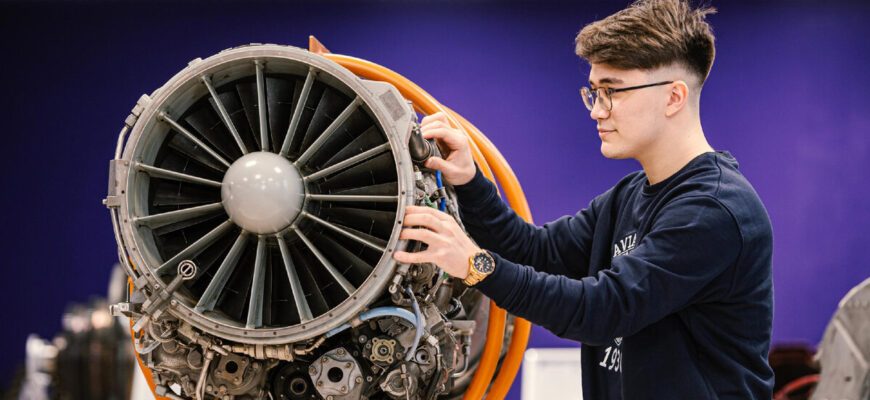In a significant leap for space technology, engineers at the Moscow Aviation Institute (MAI) have announced the development of the HT-1000, a novel Hall effect engine designed to provide an “almost infinite” operational resource for satellites. This breakthrough, reported on August 1, 2025, promises to redefine the longevity and maneuverability of spacecraft, ushering in a new era for orbital mechanics and beyond.
What Makes the HT-1000 a Game Changer?
The HT-1000 isn`t just another thruster; it`s a meticulously engineered piece of hardware that addresses some of the most persistent limitations in satellite operations: fuel dependency and mission endurance. Unlike traditional chemical propulsion systems that consume vast amounts of propellant for even minor adjustments, the Hall effect engine operates on a principle that allows for remarkable fuel efficiency and, crucially, a significantly extended operational life.
According to MAI, the HT-1000 boasts:
- Unprecedented Efficiency: Designed for high efficiency and economy, meaning less fuel for more thrust, which directly translates to longer mission durations.
- Near-Infinite Resource: While a satellite`s overall mission might still be limited by other factors like electronic degradation or power supply, the engine itself is touted to have a “practically unlimited” operational resource, moving beyond the typical lifespan constraints of current thrusters.
- Versatile Fuel Compatibility: Capable of operating on various types of inert gas propellants, offering flexibility in mission design.
- Compact and Potent: A relatively small size and weight, combined with high thrust (for an electric propulsion system), make it suitable for a wide range of spacecraft.
Extending Horizons: More Than Just Staying Power
While the prospect of a virtually immortal engine is exciting, its true impact lies in the capabilities it unlocks. Alexander Bogaty, Deputy Director for Development at MAI`s Research Institute of Applied Mechanics and Electrodynamics, highlighted the engine`s multifaceted applications:
- Orbital Maneuvering: From subtle adjustments to maintaining precise positions in crowded low Earth orbits (LEO) – especially for spacecraft over 450 kg with active lives up to seven years – to more aggressive orbit raising maneuvers.
- Constellation Management: Essential for synchronizing large multi-satellite groupings, ensuring optimal performance for global communication or Earth observation networks. Imagine managing hundreds, even thousands, of satellites without the constant worry of fuel depletion for repositioning.
- De-orbiting Capabilities: A critical, and often overlooked, aspect of responsible space operations. These engines will enable controlled de-orbiting at the end of a satellite`s operational life, significantly reducing the growing problem of space debris.
- Interplanetary Missions: The high fuel efficiency and continuous thrust potential also open doors for long-duration interplanetary travel, allowing probes to reach distant targets with greater payloads and operational flexibility. Who knew a “practically infinite” engine could also be your ticket to Mars, albeit a very slow one?
The Science of Endless Thrust: How it Works
At its core, the HT-1000 is a Hall effect thruster, a type of ion propulsion system. The magic happens when an inert gas, such as xenon, is introduced into a chamber with a strong magnetic field. Electrons are stripped from the gas atoms, creating a plasma – an ionized gas – which is then accelerated by an electric field to incredibly high speeds. This high-velocity stream of ions generates the reactive thrust needed to propel the spacecraft. It`s a testament to the elegant simplicity of physics delivering profound results.
From Lab Bench to Orbit: The Road Ahead
The development is currently in an advanced stage. Prototypes of the HT-1000 have successfully undergone initial testing. The next crucial steps involve comprehensive qualification tests to ensure the engine meets the rigorous standards required for spaceflight. Following this, preparations are underway for mass production. A high-tech manufacturing facility, equipped with cutting-edge equipment meeting the strict requirements of the space industry, has already been established in Zelenograd by Orbitek company.
A Glimpse into the Future of Space
The HT-1000 represents a significant stride towards more sustainable and ambitious space endeavors. By drastically extending satellite lifespans and enhancing maneuverability, it could lead to smaller, more efficient satellite fleets, reduce launch frequency, and make space operations more cost-effective and environmentally sound (in terms of debris mitigation). The era of disposable satellites might be slowly, but surely, drawing to a close, replaced by a future where our orbital assets can truly go the distance – and then some.









